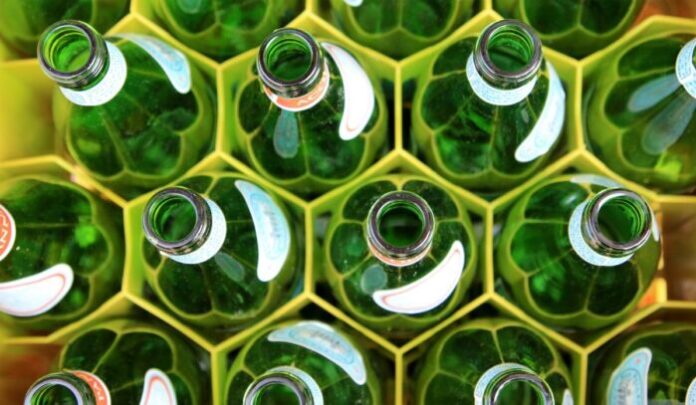
Glass is an ancient material, it already has 5 thousand years of history and has a practically infinite life: if disposed of and recycled correctly, in fact, it is reborn with shapes and intended uses identical to those of previous lives. Without any loss of material or quality deterioration, glass can be recycled indefinitely.
Glass can therefore be considered in all respects a “permanent material”, capable of perfectly realizing the concept of circular economy. Every year about 10 billion recycled glass containers are produced in Italy, with properties and characteristics identical to those made with raw materials.
Glass has numerous advantages over the use of other materials: it perfectly preserves food, leaving odors and flavors unaltered and is 100% eco-friendly. Glass not only has a low impact on the environment but, if recycled, it allows to contain greenhouse gas (CO2) emissions, to save energy and to minimize the use of virgin raw materials, of an extractive nature (quarried minerals, such as sand or carbonates) and chemical (soda).
The first phase of recycling begins with a correct separate collection. Attention, therefore, to properly separate the materials paying attention above all to “false friends”, those objects that seem glass but in reality are not, that is, plates, cups or other ceramic objects, glasses or other crystal objects, containers in pyrex, lamps and bulbs; all waste that must be put in the containers of the unsorted collection.
The rules are few and simple, as Coreve (Glass Recovery Consortium) suggests. They invite you to throw only and exclusively the packaging, i.e. bottles and glass jars avoiding to throw in the same bin the plastic bag that contained them, which instead goes in the separate collection of plastics. It is good to empty the glass containers of any food residues and remove all packaging accessories, made of materials other than glass and easily removable (e.g. metal caps, collars, sleeves). There is no need for prolonged washing or other complicated systems to remove labels or other accessories attached to the packaging, if they are difficult to remove.
Once collected, the glass is taken to the treatment plants that transform glass packaging waste into MPS (Second Raw Material), the scrap made suitable to be recycled in the melting furnaces of the glassworks for the production of new glass containers. Modern technologies allow the recovery of fractions of fine material that until a few years ago were destined for disposal. The fine fraction, consisting of the smallest glass fragments, from which the pollutants cannot be removed, can be partially recovered and reused in glassware or in other sectors such as construction.

In collaboration with SmartRicicla we have compiled a list of recyclable materials in the collection of glass and those that should instead be given elsewhere.
WHAT YOU CAN THROW IN GLASS:
- cans
- bottles
- jars
- packaging in general
WHAT YOU CAN’T THROW IN GLASS:
- dishes
- cups
- glasses and crystal objects
- light bulbs
- neon lamps
- solvent and paint containers
- hemodialysis containers
- mirrors
- plates
- glass objects which are not packaging
Read more:
- Separate collection: how to recycle paper waste
- Separate collection: how to recycle single-use gloves and masks
- Separate collection: how to recycle plastic waste
- How to make separate collection: what to throw in the unsorted waste
- Separate collection: how to properly recycle organic waste
- How to make the separate collection: recycling codes and symbols
- How to recycle: a guide to separate collection



































